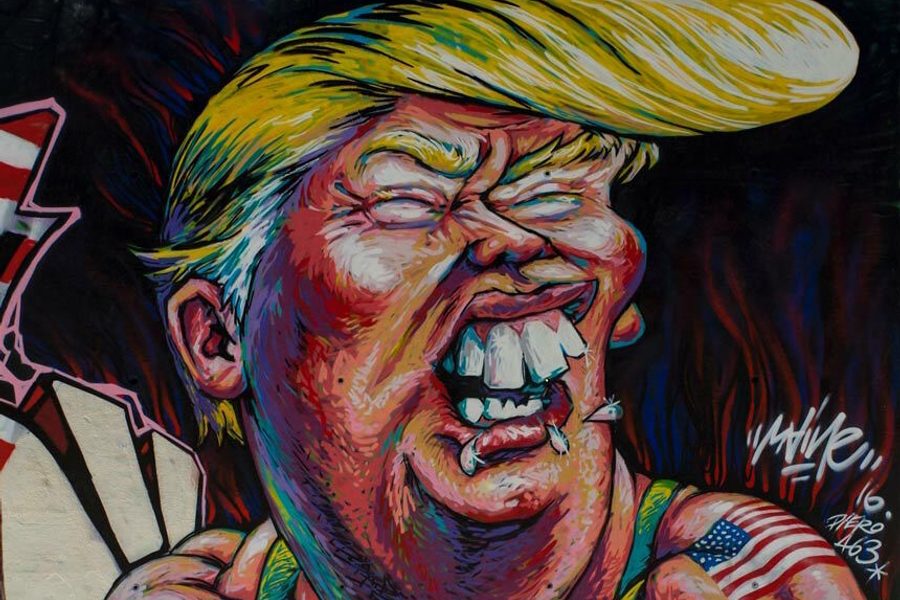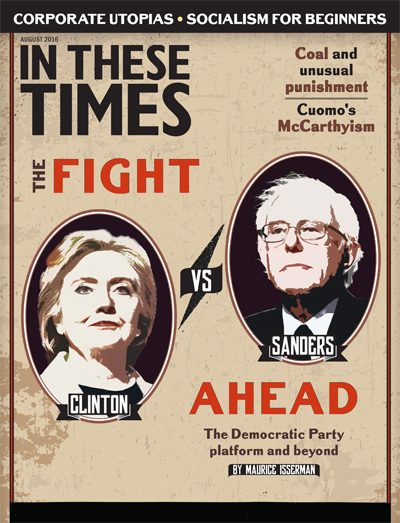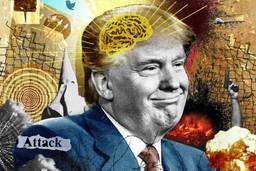Donald Trump’s Fingers Were Always Short
In business as in politics, there’s never been much behind the splashy surface.
Chris Lehmann

Whatever else we end up saying about Donald Trump’s historic run at the presidency, no one can plausibly suggest he came out of nowhere. A fixture in the New York mediasphere for roughly four decades, the bloviating developer has been the equivalent of wallpaper: bright orange, tantrum-prone, terminally self-infatuated wallpaper. When I lived in New York in the late 1990s, many of my workdays began with a trip to my corner bodega, where talk radio played at full blast, with Trump as a near-constant call-in guest. As a result, I’d have to wait for a commercial break to take a bite of my bagel, so my teeth could stop gnashing long enough for me to eat.
Mark Singer has been writing New Yorker profiles for about as long as Trump has been inflicting his ego on the greater New York mediasphere. In 1996, then-New Yorker editor Tina Brown returned from a breakfast meeting with Trump determined to commission a profile of the real-estate mogul, and turned Singer loose.
The premise was that Trump was in the midst of a Nixon-like moment of self-reinvention. Trump’s casino-and-hotel complex in Atlantic City was drowning in red ink and drastically devalued junk bonds. To extricate his empire from bankruptcy, he gave up assets and titles, even his yacht, and saddled his creditors with between $600 million and $800 million in bad paper.
Singer leapt to the project with something less than ardor. In Trump and Me—a generously padded re-release of his story in book form — he recounts the chief challenge of the assignment: “Unaccustomed though I am, I have to take Donald Trump seriously.”
And so he spent months as a fly on the wall as Trump schmoozed with hangers-on and B-list public figures, from Russian strongman (and very short-lived presidential prospect) Aleksander Lebed to Wheel of Fortune’s professional gesturer Vanna White.
What, then, does Trump and Me tell us about the unlikely 2016 GOP presidential standard-bearer? Chiefly that the longer you gaze into the inner workings of the great man’s self-advertising empire, the less you are persuaded that there’s an actual “there” there. For example, as he sizes up the deal to refinance the flailing Trump Castle project (which had been shedding revenue at an annual clip of 10 percent, “the worst of any casino in Atlantic City”), Singer abruptly realizes that the refinancing deal was actually just a further expansion of the facility’s debt leverage — “less an investment than a loan.”
Never mind that the whole agreement collapsed when Trump’s new partner, L.A.-based Colony Capital, pulled out. Trump claimed he was the party who walked away, and the lie once again helped the Trump bubble remain aloft, at least in the public eye.
So it is, Singer notes, with virtually every facet of the operation: “Trump’s vaunted art of the deal has given way to the art of ‘image ownership.’ ”
Among other things, this realization wrought havoc with the conceit of the profile itself: “The ‘comeback’ Trump is much the same as the Trump of the ’80s; there is no ‘new’ Trump, just as there never was a ‘new’ Nixon,” Singer writes. Instead, Trump, much like his own overvalued gilded properties, is a garish collision of surface impressions — the business world’s version of a performance artist, Singer notes.
This central insight has gruesome consequences for what might generously be termed Donald Trump’s moral character. As Singer writes, here is a man “who had aspired to and achieved the ultimate luxury, an existence unmolested by the rumbling of a soul.”
There’s no reason to suspect that the presumptive 2016 GOP nominee will do anything different this time out. He’s already given every indication that he’s simply leveraged himself into another deceptive partnership with the flailing corporation known as the Republican Party, and is fully prepared to walk away and declare himself the savvy winner once this disastrous misallocation of political capital is converted into still more bad paper. When Trump’s FEC filings revealed a scant $1 million in ready campaign cash on hand — and a host of feather-bedding expenditures to Trump family members and Trump-owned companies — the Republican electorate got a crash course in the lesson Atlantic City learned long ago: Ignore all that aggressively branded glitz, and hold fast to your wallet.









